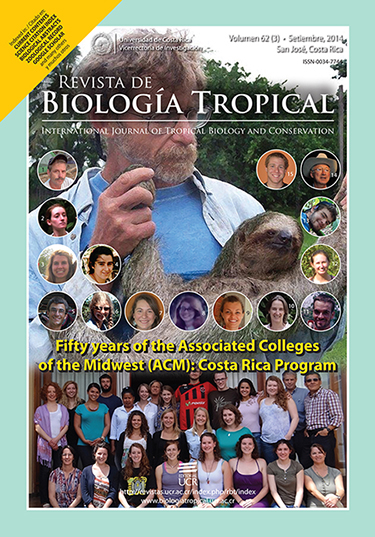Resumen
La existencia cada vez más frecuente de mosaicos de paisaje se expresa como una matriz circundante de actividades agropecuarias que enmarcan relictos de vegetación primaria. Cualquier acción de conservación debe de estar orientada a establecer o incrementar aquellos sistemas interactivos que mantengan los flujos del paisaje a través de enlaces. Los espacios ocupados por sistemas tradicionales de manejo favorecen y mantienen esta función. En el presente trabajo se evaluó, a través de un sistema de información geográfica, la importancia de las unidades de selva manejada de manera tradicional (acahuales-cafetales) en la conectividad del paisaje en la zona indígena Popoluca de la Sierra de los Tuxtlas, México. El material cartográfico utilizado para determinar los tipos de vegetación y su cobertura, abarca el periodo 1991-2008. Se emplearon cuatro índices para evaluar la conectividad a nivel paisaje y detectar cuáles son los fragmentos de muy alta prioridad para su mantenimiento. A nivel individual los índices evaluaron si los fragmentos son importantes por su área, por su flujo potencial o por su función conectora. Los resultados muestran que el paisaje funciona como un solo sistema, con baja conectividad. Los valores mejoran al incluirse la selva manejada como hábitat viable. Se detectaron 367 fragmentos de muy alta prioridad, 80% de ellos de selva manejada. Los fragmentos en su mayoría fueron importantes por el flujo potencial que representan (dimensiones y relaciones topológicas). Solo 70 fragmentos fueron importantes por su función como conectores, éstos actúan como corredores con las masas forestales de mayor tamaño localizadas en la cima de los volcanes, y son principalmente fragmentos de selva manejada (75%). Se concluye que las unidades de selva manejada de manera tradicional juegan un papel significante en el mantenimiento de la conectividad del paisaje.
##plugins.facebook.comentarios##

Esta obra está bajo una licencia internacional Creative Commons Atribución 4.0.
Derechos de autor 2014 Revista de Biología Tropical






